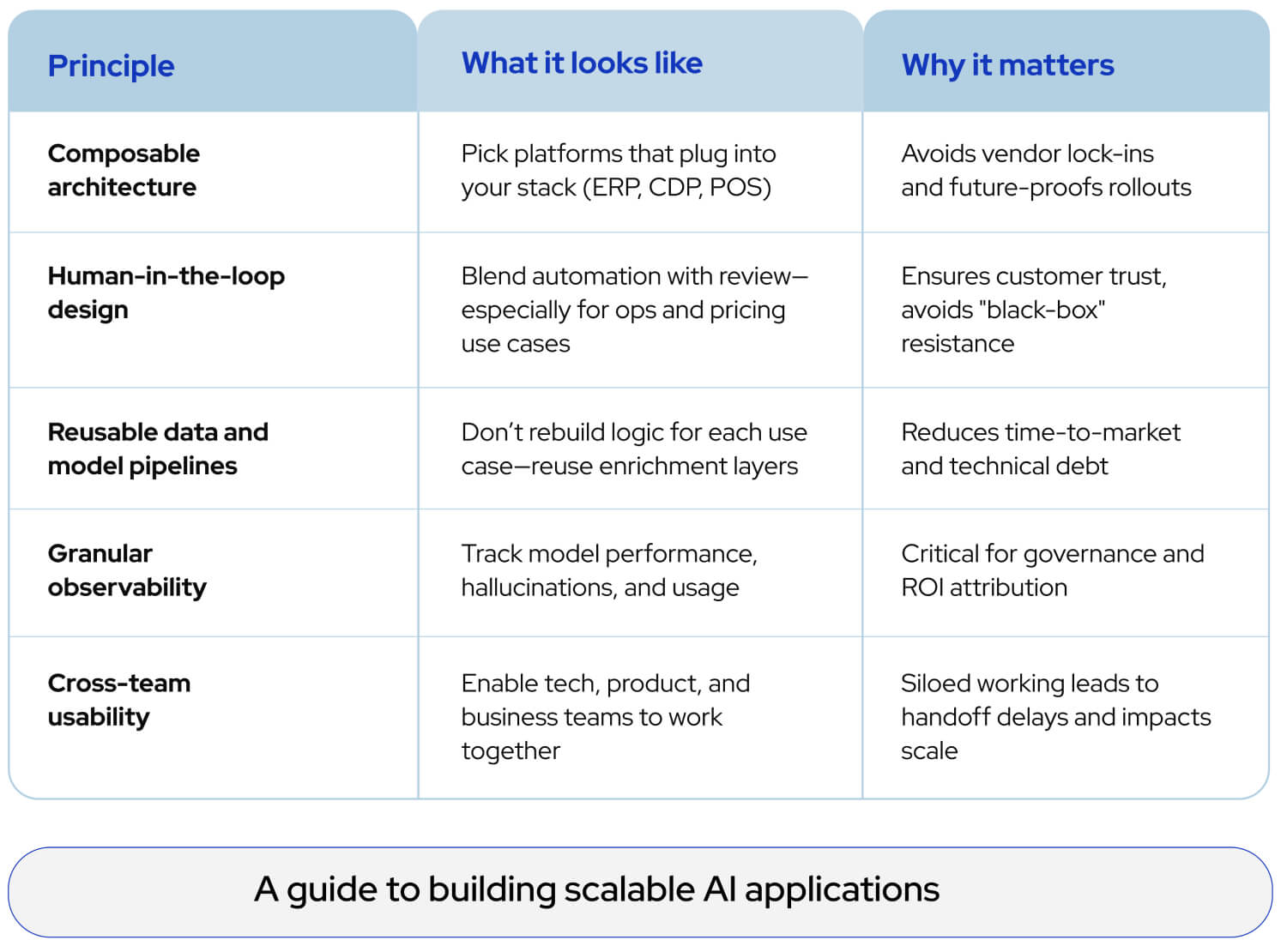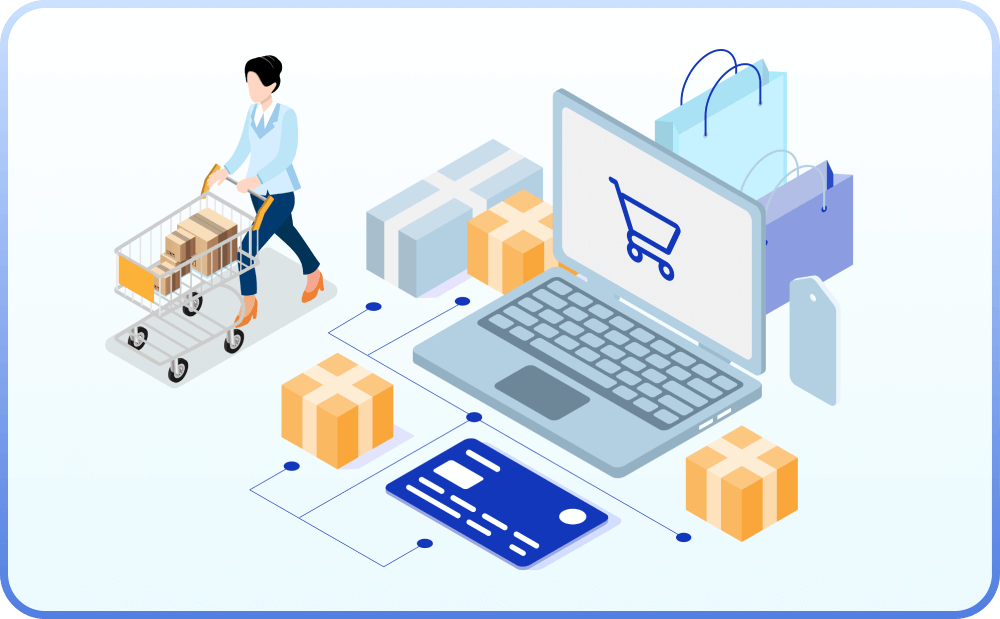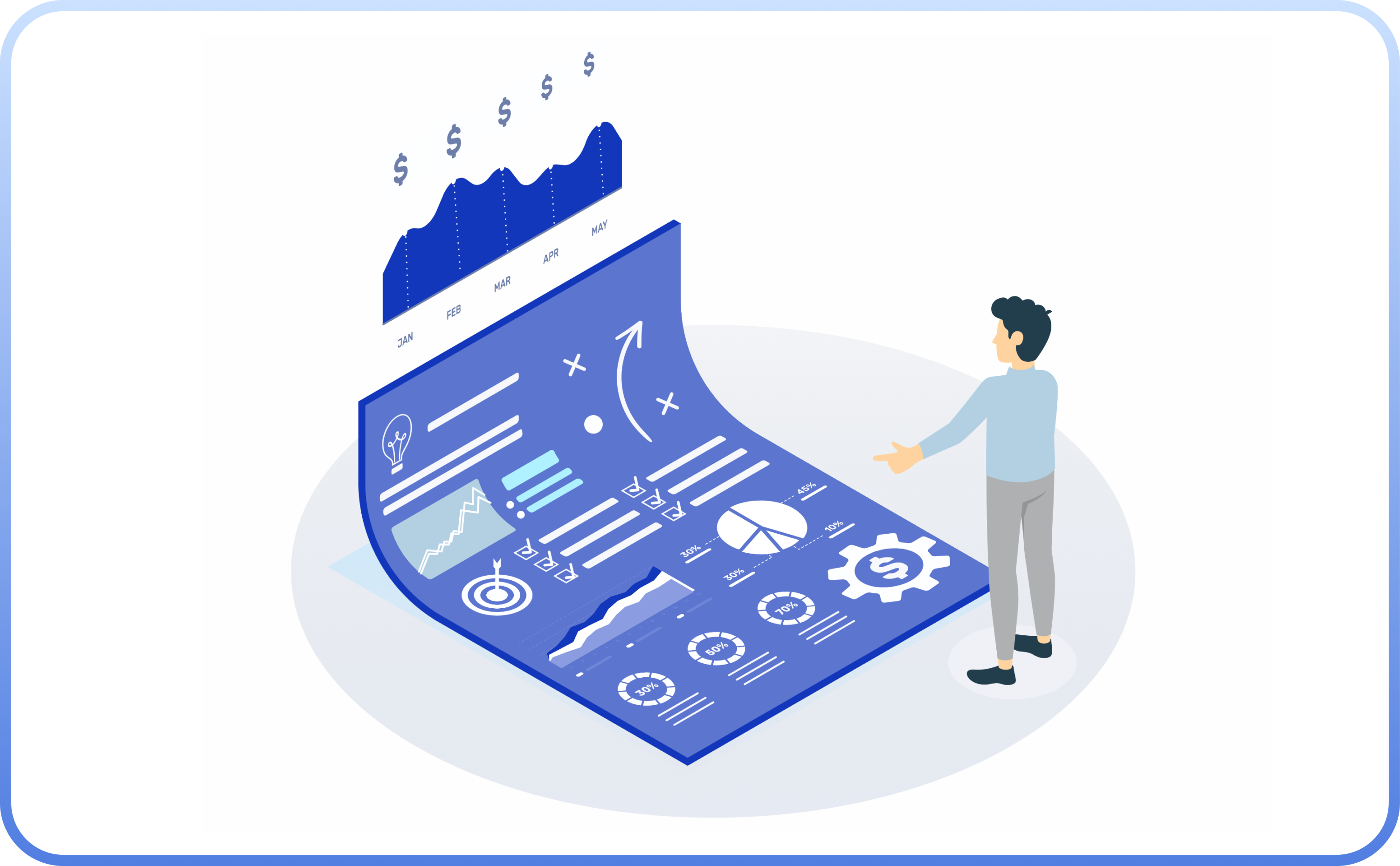Summary
AI is rapidly transforming the retail landscape—enabling hyper-personalized experiences, intelligent automation, and data-driven decision-making. Discover how leading retailers use AI to forecast demand, improve customer experience, optimize inventory, and reduce risk. Uncover the key challenges faced in adopting AI and get a practical blueprint to scaling AI successfully.
Not long ago, shopping meant queues, generic promotions, and one-size-fits-all experiences. Today, AI is quietly rewriting the rules of retail—enabling smart checkouts, hyper-personalized journeys, instant customer support, and more.
But while AI hype dominates headlines, real value in retail comes only with smart execution. This blog uncovers how AI is truly transforming the retail landscape. It outlines the top areas of value, the key blockers that stall progress, and what leaders must prioritize to drive real-world business outcomes.
What’s fueling AI in retail?
For today’s consumers, especially millennials and Gen Z, a seamless and personalized shopping experience isn’t just a perk, it’s an expectation. Retailers aren’t just reacting—they’re racing to keep pace. According to Gartner, 91% of retail IT leaders are prioritizing AI as the top technology to implement by 2026*. And it’s not just about shopper delight. AI is core to:
- Driving efficiency across supply chains, fulfillment, workforce operations, and last-mile deliveries
- Reducing costs with automation and AI led inventory management
- Outpacing competition via real-time insights and predictive decision-making
Real-world use cases of AI in retail
From the days of basic automation and rudimentary product recommendations, the use of machine learning by retail giants has evolved exponentially. Here’s a closer look at some of the top use cases where AI is making a far-reaching impact.
1. Hyper-personalization at scale: By using AI to analyze browsing, purchase, and behavior data, businesses can tailor shopping experiences according to individual preferences—in real time.
Example: Amazon’s recommendation engine drives over 35% of its revenue.
2. Conversational commerce and always-on support: Retailers are leveraging conversational AI to make 24×7 customer support a reality. They use customer service chatbots to reduce waiting times, enhance customer experiences, and maximize service quality.
Example: eBay’s ShopBot helps shoppers quickly snag the best deals across 1Bn+ listings.
3. Inventory and supply chain optimization: AI plays a critical role in automating inventory tracking, forecasting demand, and driving intelligent warehouse operations. On the quick commerce front, AI helps optimize inventory levels at dark stores and micro-fulfillment centers, ensuring last-mile delivery speed.
Example: IKEA uses AI-powered drones for stock counts—saving hours of effort and improving accuracy.
4. Virtual try-ons: AI and AR together enable people to virtually try on different outfits, eyewear, watches, and even see what a new sofa will look like in their living room. These immersive experiences enhance engagement, boost conversion, and reduce the chances of product returns.
Example: Sephora uses AI-powered virtual makeup testers to let customers try out cosmetics anytime, anywhere.
5. Security and fraud detection: Retailers are increasingly adopting AI-powered systems to monitor vast amounts of transactional data and detect suspicious patterns such as unauthorized purchases or payment anomalies.
Example: Walmart uses AI to detect missed scans at self-checkout lanes and to flag unusual activities like shoplifting.
6. Sustainable practices: With awareness around sustainability on the rise, AI has stepped up to help retailers reduce waste and lower the environmental impact of logistics by optimizing supply chains and delivery routes. AI systems also work to monitor and optimize energy use in retail settings, contributing to broader sustainability objectives.
Example: H&M applies AI to avoid overproduction and minimize textile waste.
7. Demand forecasting and planning: Retailers once relied on static rules and historical trends for forecasting, but AI has changed the game—analyzing vast, diverse data (sales, weather, social trends etc.) to deliver faster, more accurate predictions for inventory, demand, and staffing.
Example: Starbucks analyzes individual preferences, time of day, weather, and seasonal trends to forecast inventory needs and reduce food waste.
Roadblocks for AI adoption in retail
While AI has completely transformed the way we shop, behind the scenes, when it comes to deploying specific use cases, retailers often grapple with data challenges, cost bottlenecks, talent gaps, and security risks. Here are some common friction points:
Low quality data: Inaccurate, incomplete, and inconsistent data often prevents a unified view of the customer and operations—limiting model performance.
Data integration challenges: Collecting and analyzing data from disjointed POS systems, e-commerce platforms, inventory tools, and CRMs is difficult and time-consuming.
High costs, unclear ROI: The upfront investment in AI technology can be burdening for mid and small-sized retailers. From GPUs and advanced software to hiring AI specialists, pilot costs can increase significantly, often without the promise of immediate returns.
Talent constraints: Retailers don’t need massive teams of AI experts—but they do need tools that empower cross-functional teams to build and launch quickly.
Security and compliance worries: Given the vast volumes of sensitive customer data handled by retailers, the risk of AI-driven cyberattacks often acts as a deterrent in AI adoption.
From pilot to scale: A blueprint for implementing AI in retail
If your organization is thinking about using AI to drive measurable outcomes—not just experiments—having a structured, execution-ready blueprint is pivotal. Here’s a proven framework that leading retailers are using to leverage and scale AI across their businesses.
1. Laying a solid foundation: AI readiness checklist
Before scaling AI, assess where you stand across four critical dimensions:
Data readiness
- Is customer, inventory, and sales data unified across systems (POS, ERP, CRM, e-commerce, apps etc.)?
- Can teams access both historical and real-time data for AI training and inference?
- Is the data clean, labeled, and context-rich?
Platform and integration readiness
- Can we connect AI models to the systems where decisions happen (e.g., pricing engine, recommendation engine, fulfillment)?
- Are we locked into one cloud/AI provider, or do we have flexibility to work with different models and stacks?
Organizational readiness
- Can your business, analytics, and tech teams collaborate efficiently on AI use cases?
- Is governance in place for model usage, retraining, and explainability?
Business outcome alignment
- Are your AI initiatives directly tied to revenue, profitability, or customer experience goals?
- Can the business impact of each use case easily be measured—conversion uplift, stockouts reduced, etc.?
2. Prioritizing the right use cases with the right approach
Not all AI use cases deliver the same amount of value. Based on insights from leading retailers, starting off with high-impact, quick-to-implement use cases can drive tangible success. Here are some examples:
Personalized search and recommendations: Use AI-powered personalization to leverage existing product and customer data and increase Average Order Value (AOV) and conversion rates. Start with anonymized clickstream data (views, carts, purchases etc.), where AI can tailor results in real time and show users products they’re more likely to engage with.
Inventory-aware demand forecasting: Use AI to predict demand for individual SKUs across stores and regions, forecast demand across online vs offline channels, and adjust inventory allocation accordingly. Start by consolidating historical sales, promotions, and inventory data into a single dataset. Use prebuilt or customizable models to forecast future demand at the SKU, store, or region level, while factoring in current inventory and stock constraints.
Conversational product discovery: Integrate your product catalog with a suitable model and deploy it on your website or app. Start with a high-traffic category where AI can guide shoppers using natural language, refining results through interactive filtering. With minimal setup, this use case boosts engagement, shortens time-to-find, and increases conversions.
Real-time out-of-stock and pricing alerts: Apply AI or rules-based monitoring to automatically detect anomalies—such as sudden stockouts, pricing errors, or mismatches across channels—and trigger instant alerts to relevant teams. Integrating real-time inventory and pricing data feeds across platforms prevents lost sales while ensuring price consistency.
Customer support automation: Identify common queries—like order tracking, returns, and FAQs—and deploy a chatbot trained on your returns policy, order logic etc. Integrating the bot with backend systems can provide real-time answers while escalating complex issues to human agents. This improves response speed, reduces support costs, and enhances customer satisfaction.
3. Building for scale, not silos
Most failed AI projects stall at the pilot stage because they weren’t built ground up for scale. Here’s how to avoid that trap:

What retailers need next: Flexible, data-first AI platforms
Retail’s AI journey isn’t just about adopting the most advanced model—it’s about sharp execution. You need a platform that:
- Ingests data across ERP, POS, CRM, and e-commerce platforms in real time.
- Prepares and transforms data for AI without long engineering cycles.
- Works with any model or provider—OpenAI, Vertex, Bedrock, or your own LLMs.
- Offers control, visibility, and scale across cloud, on-prem, or hybrid environments.
- Lets product, tech, and business teams co-create and experiment fast.
This is where Gathr.ai comes in. Gathr.ai helps retailers unify all their data, effortlessly integrate any AI, and build and deploy custom GenAI applications at scale—without needing to rip-and-replace existing systems. From demand prediction and personalization to intelligent search and real-time alerts, Gathr.ai accelerates the AI journey for both IT and business stakeholders.
Want to go deeper? Schedule a personalized demo today!
*Source: https://www.gartner.com/en/industries/retail-digital-transformation


 Redshift
Redshift MS SQL
MS SQL  MySQL
MySQL PostgreSQL
PostgreSQL Trino
Trino Starburst
Starburst
 All resources
All resources





